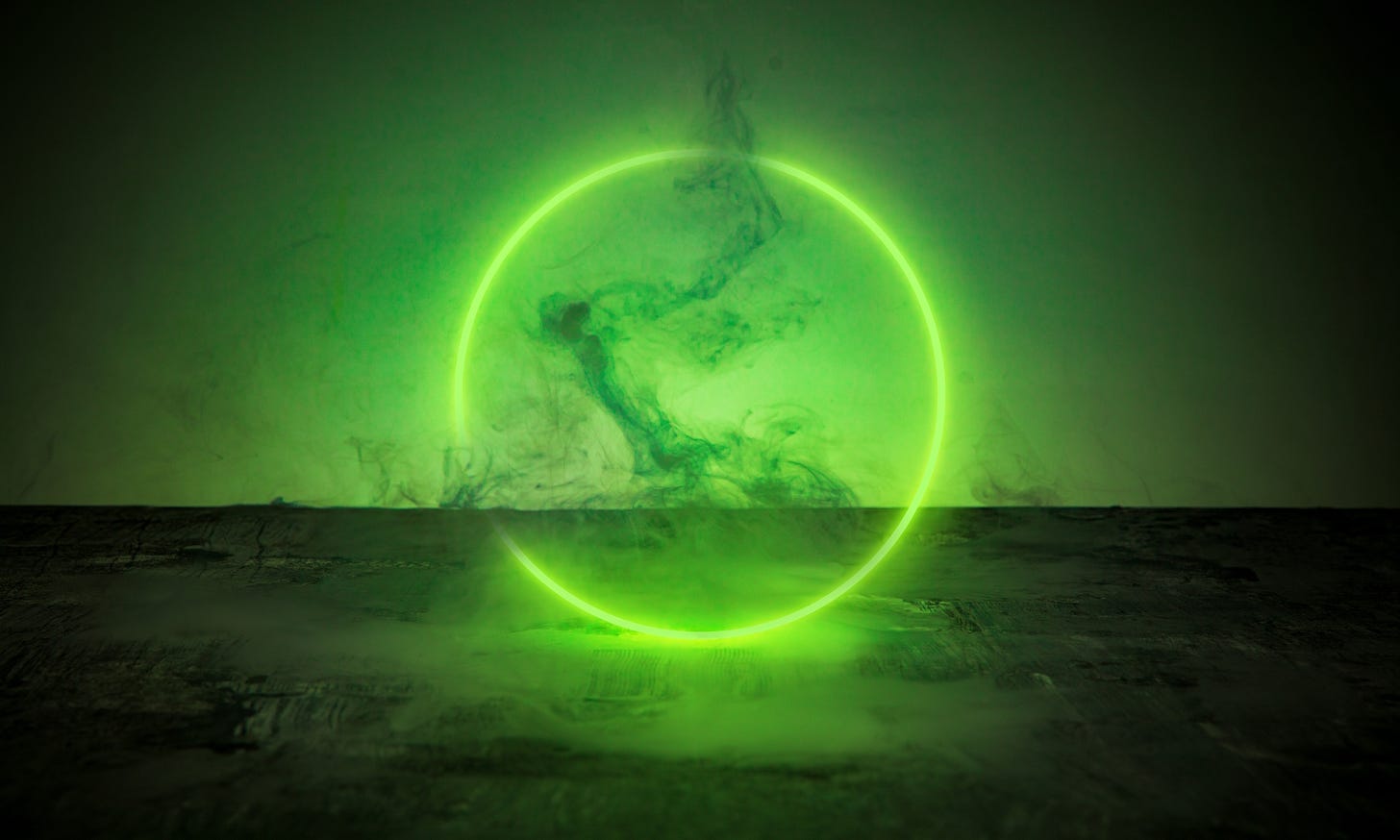Some might find this content triggering. Tough topics like rape, abuse, depression, and death come up.
*
He’s weird, don’t talk to him.
When I was in high school, there was this kid in band who wore a trenchcoat and carried around a violin case. His name was Dan.
Everyone said there was a gun in that case, or possibly drugs, despite the fact that Dan really did play the violin.
Maybe it was the trenchcoat that freaked people out. Maybe it was his look: tall, skinny, and pale with black hair. Dude looked like a Tim Burton character.
Maybe it was how unsmiling and somber he always was. Like when he looked at you, he was seeing how shallow and stupid you were. Dan could tell at a glance that you’d never read Moby Dick.
Or maybe it was how quiet he was . . . until he finally said something, but it was so off-the-wall that everybody was a little weirded out and wished he would just be quiet again.
Or maybe (hush hush) he was planning to shoot up the school. Because Trenchcoat Dan looked like he had issues.
For whatever reason, people were creeped out by Dan.
They didn’t actually make fun of him. He made them a little too nervous for that.
But they did avoid him.
Dan was an example of the Hades archetype in action.
He shows up in characters like Bruce Wayne, Edward Cullen, Joe from You, Tate Langdon in American Horror Story, and others.
Before we talk more about Hades, let’s talk about the archetypal Underworld. Because Hades the place creates an excellent context for understanding Hades the man.
*
Where Hades is Lord
In Jungian archetypal symbols, the Underworld is the realm of the subconscious mind.
It’s not just the realm of the dead. It’s the realm of the shadow.
If you dig around down there, you’re gonna find all kinds of shit that you’d rather forget. Repressed anger. Fears. Shame. Suppressed trauma and painful memories. The hate you wish you didn’t feel for others. The despair of your failed dreams. The sense of unworthiness that’s dogged your steps for as long as you can remember.
It’s aaallll down there.
Where Hades is Lord.
This aspect of Hades made our ancestors hella uncomfortable.
In some parts of history, it was considered bad luck to even say Hades’s name aloud. Your friend Persea Athenea Konstaninopolis would slap you like, “Girl, are you TRYING to invite bad shit into your life?”
Instead of saying his name, you would say:
The Unseen One (Did you know Hades had a cap of invisibility? That’s why nobody noticed Dan at parties.)
The Wealthy One
Good Counselor
Renowned One
Hospitable One (Get it? Because everyone is eventually welcome in Hades.)
Gate-Fastener (But nobody’s getting back out.)
Hateful One
Zeus of the Underworld
*
But Hades is more than an eternal suckfest.
The Underworld is also the realm of buried treasure.
As much as all the shit in your shadow is hiding out down there, so are the untapped potentials within you.
All the versions of yourself you’d like to be. All the ways you’d like to grow, express yourself, achieve your dreams. The love you’d like to give. The art you’d like to make. The money you’d like to earn. It’s all there. Waiting for you to work up the courage to go down and get it.
And it is gonna take courage.
It’s still in the Underworld, after all. No pussies allowed.
In fact, digging up all that good stuff is most likely going to unearth the unwanted stuff, too. You wanna go for your long-time dream of becoming an artist? You’re also going to have to face that Underworld demon who says you’re not worthy of it because you suck and you don’t have anything interesting to make art about anyway.
(Fuck that demon. What art has she ever made? I think she’s the unoriginal one.)
Dragons have always guarded treasure.
Okay, back to Hades the man.
(Yes, I’m calling him a man, even though we all have Hades within us.)
The archetypal character and the archetypal place are kind of intertwined.
It’s not easy to live in the Underworld and come up to the land of the living. Despite his realm being a vast wasteland or a shadow realm (depending on how you approach it), Hades rarely made the journey to the Great Above. Bolen says he only did it twice.
When he did, he was either wearing his cap of invisibility or otherwise didn’t make much of an impression.
A Hades man like Trenchcoat Dan doesn’t do well at parties.
He lurks in corners and goes unnoticed. Or he says weird shit, or he’s tatted up and maybe packing a weapon. (Google scary-hot model Jord Liddell and thank me in the comments. I’m too afraid of him to include a picture here without permission. So here is a picture of Persephone.)
*
Either way, Hades unnerves people and he’s out of his element in social settings. A total party pooper.
So most of the time he doesn’t have a lot of friends.
Which is fine by him.
Introspective Hades would rather be alone—thinking, studying, working, or creating art. Or sometimes running a drug operation on the streets.
He’s always been this way.
Even when he was a tiny little Lord of the Underworld, he didn’t fit in. He wasn’t the boy that his parents thought a boy should be. He didn’t want to play sports, ride bikes, or go hunting and fishing with his dad. Little Hades was happy playing in his own little world.
He might even experience the world differently.
I mean, we all experience the world differently.
But Hades can take it to another level. He might have synesthesia or visions, or he might be a psychic medium.
Whether he has super-sensory abilities or not, he got used to feeling inadequate early on in life. He’s not what his parents think a boy should be. He’s not normal enough. He’s not strong enough. He’s not playful enough. And that continues as he gets older. He’s not social enough. He’s not successful enough. He’s not athletic and charming enough. He doesn’t give a shit about passing trends or fads, and he looks down on those who do.
Some Hades boys were abused as children.
They may wind up on medication or spend time in psychiatric institutions or prisons.
*
Hades’s women
We both know it. We can’t talk about Hades without talking about how he treats women. So let’s get into it.
Hades likes women but he sucks with them.
He doesn’t know what to say.
They think he’s boring, odd, or flat-out scary. (Seriously, Jord Liddell.)
But relationships are important for this archetype. He’s not one of the “virgin gods,” the unmated ones who can thrive without a partner, like Hermes and Apollo.
Hades is, in a big way, defined by his romantic relationship.
I know that’s anathema to say in this day and age. We are not defined by our relationships, I don’t need no man/woman, yada yada.
Except, a loving relationship does change you. What’s that line from the song Nature Boy? “The greatest thing you’ll ever learn is just to love, and be loved in return.” Thank you, Nat King Cole.
Love can nurture you to flourish into a more fully realized version of your self-expression. It can help you evolve.
This is absolutely the truth with Hades.
If he is going to reach his potential, he needs his Persephone. Just like she needs him to help her find her power. (Oh, just wait, I have written so freakin’ much about Persephone. I can’t wait to share it with y’all here.)
I’ll unpack the different manifestations of the Hades-Persephone relationship below, when I explore Hades’s three different aspects.
*
Can he stay true to himself?
Like most of the archetypes, Hades can evolve in different ways.
Some Hades men get trapped in the wasteland of their Underworld, forever fleeing the demons of their own shadow realm.
That Hades is always dealing with feelings of inadequacy. If he doesn’t manage to find the treasure within himself—to access his inner truths and guidance—he’ll always feel inadequate. He’ll live on the fringes and outskirts of society. He’ll have trouble making friends and he may abuse women.
Others turn their eyes inward, take a good hard look at what they find, and learn to mine their inner landscape for treasure.
What they find is the guidance of their own soul.
This Hades becomes the Hermit of the Tarot, carrying the lantern through the darkness. He can find his way through anything with that inner guidance. That lantern is the Star of the Tarot, by the way. It’s not only his own inner guidance—it’s Heaven’s guidance.
If he does manage to find his inner treasure, he’ll develop a deep-seated confidence that can’t be shaken, regardless of gossip or public opinion. He’ll find success in his career (he’s “The Wealthy One,” remember?) and find a lifelong partner who is his equal.
But the lantern is not easily come by.
As Bolen wrote in Gods in Everyman:
“The theme for Hades the man is how to adapt: Can he stay true to himself and also fit into the outer world?”
— Jean Shinoda Bolen
Many times, the answer is no. Hence, the psychiatric treatments or prison time.
Let’s look at a few evolutions of Hades. I’m separating him into three tiers, the way I did for Artemis.
*
Dark Hades
This Hades has not found his inner treasure.
He’s just trapped in the frickin’ Underworld.
He has a love/hate relationship with it.
On one hand, he’s happiest in his element because he doesn’t fit in anywhere else. On the other hand, “his element” is often a shithole. A wasteland.
This Hades is a recluse, surviving on the fringes of society. He’s the addict living in a cheap motel. Or he lives a seemingly normal life on the outside, but has a secret dark fringe existence. He’s highly intelligent, but he often struggles with mental illness.
And he’s dangerous.
“If he does not have a family, he may live alone in a transient hotel room in the part of every big city that is the netherworld, where pornographic stores, streetwalkers, and drug dealers do business and where the homeless and the down and out sleep in doorways. This place is like Hades the underworld, much as he himself is like an invisible Hades.”
— Jean Shinoda Bolen
This Hades kidnaps and rapes his Persephone.
Or he lures her with pretty things and promises, and then plunders her.
But he still has a rich inner life.
So he might see a pretty woman and get attracted to her from afar, building a whole life with her in his mind. She becomes like his imaginary girlfriend. If things get out of hand—which is always a risk with Dark Hades—he might even “intrude in some inappropriate or crazy way on the real woman.” (Bolen.)
We’re talking about stalkers, rapists, and murderers, folks.
Like Joe Goldberg in You. (Spoilers for You ahead! But not many.)
Joe has childhood trauma and mental issues. But life can’t keep Joe down. He’s an eternal optimist, and he believes in the power of true love. When he sees a beautiful woman, he idealizes her in his mind. It’s love at first sight. Over the next few days, weeks, and months, he builds an entire relationship with her in his imagination.
And stalks the fuck outta her.
If she doesn’t agree with his belief that they’re meant to be? She spends some time in the sealed plexiglass aquarium-thing that he keeps in his basement until she can come to her senses. It’s for her own good.
Classic Hades shit right here.
This is the most widely recognized version of Hades.
You know the story.
The Lord of the Underworld abducted Persephone—the sweet little thing who loved flowers and springtime—and dragged her kicking and screaming to his realm. There he held her captive and assaulted her. The girl’s mother, who happened to be the Goddess of the Harvest, was so grief-stricken that she caused all the crops to die, swearing she wouldn’t bring them back until her daughter was returned to her. Zeus finally got fed up with the whole famine thing, and sent Hermes to tell Hades, “Hey. You gotta give the girl back.”
Hades sighed. “FINE.”
But he gave Persephone a pomegranate to eat before she left the Underworld, which meant she couldn’t 100% leave. She ate the fruit of the dead, and it transformed her. A part of her was dead now, too. So she had to spend half the year with Hades.
She hated every moment of it.
I give you Tate Langdon and his lady love, Violet, in American Horror Story: Murder House. (haha, I just noticed Tate’s Persephone is named after a flower! Also, serious spoilers for the show and corpsey gruesomeness.)
*
*
*
(Seriously. Corpsey gruesomeness. Turn back now.)
*
Tate Langdon is a serious head case. He hallucinates, obsesses over his therapist’s daughter, creeps everyone out, shoots up his school, and commits other various crimes and murders. Here he is scaring the hell out of Violet, who can’t get out of the Underworld.
(By the way, I love that with Hades characters, so many of their scenes take place in dark settings like creepy basements. Or the DP and gaffers used very dark and foreboding lighting.)
This version of Hades can find power.
He is the King of the Underworld, after all. Though he’s a recluse, he’s not always on the sidelines. He can rise to the top of his field and run a street gang or own a bookstore, for example.
Or if he plays violin in a band, he can become the lead violin.
*
Dim Hades
I’m calling this version “Dim Hades,” but not because he’s stupid (he’s definitely not). It’s because he’s no longer Dark, but he’s not yet the Enlightened Lord we know he can be.
Dim Hades has still got issues.
He might deal with depression, paranoia, and violence (against others or against himself). He doesn’t abuse women as dramatically as he did in the Dark version, but his relationships with them aren’t exactly healthy, either.
I went back and forth on whether to include Bruce Wayne in this section or the next. In a recent post, I explored how Nolan’s Batman is a near-perfect representation of the Hades archetype. He’s faced down his inner demons.
But Bruce Wayne has no Persephone. His power still rests in violence. I don’t think he’s come to any kind of peace with his existence.
While Nolan’s Batman explores the archetypal power of an Underworld journey, I think Matt Reeve’s Batman—the Robert Pattinson one—is more on target with the archetype’s personality. Pattinson’s Bruce Wayne is clearly depressed and may have some mental issues.
I also love how dark and gritty Gotham is in this version. It really does look like the Underworld. (Which would make the Batcave . . . the Under-Underworld?) This clip takes its time, but Bruce’s monologue (which starts around 1:10) is excellent.
Bolen says that Howard Hughes is another example of Hades.
“. . . An isolated and paranoid Hades, as billionaire Howard Hughes [became] in his last years. Hughes’s wealth made it possible for him to occupy a floor of his own hotel in Las Vegas, where no one he did not authorize could enter, and bodyguards kept his safe—or virtually a prisoner in his own realm.”
— Bolen
I’m not going to argue with Bolen on this one, but I’m not sure.
Hughes may be a version of Low/Dark Apollo (who I haven’t written about yet). Apollo characters are intellectually brilliant and emotionally distant, like Sherlock Holmes and Spock. In his darker manifestations, he’s totally reclusive and crazy. There’s some similarity between Hades and Low Apollo which will be fun to explore in a future post.
Finally, I’ll drop the Phantom of the Opera in with the other Dim Hades guys.
He’s not evil. His tragic backstory and mental issues make him redeemable. And he does elevate his Persephone by making her a better singer. But, y’know, he also abducts her and drags her into his subterranean Gothic mansion to be his dark bride.
*
Lord of the Underworld
This is the coolest and least well-known version of Hades.
He’s done the work to evolve.
He’s become like The Hermit of the Tarot, who lives alone in darkness and carries a lantern to guide him through the Underworld.
“When questions about the nature of existence and the purpose of life start eating away at your mind, answers will not be found in the physical world. They can only be found inside of you . . . Now you must become like the Hermit, who seeks the answers alone. Only the whispers of his Inner Voice, and the light of his lamp, will guide him now.”
ATA-Tarot says that eventually, the Hermit will cast away his lantern and only look to his inner self for guidance. I’m not sure about that. The light in the lantern IS the Hermit’s inner guidance, combined with divine wisdom.
The lantern holds the Star, also from the Tarot.
When you cannot help yourself, the Star tells you to look to the heavens for guidance. Or, more appropriately, look to the spark of divinity that lies within yourself that you could not see or acknowledge before . . . The Star is a card of faith, both in your own power, and in powers greater than your own.
That’s how this version of Hades learns to navigate his own darkness, not fear it. It no longer torments him. He finds the beauty in it, and it becomes his realm of power. His kingdom.
That means he’s mastered his own unconscious mind.
All of his fears, his anxieties, his confusion. His hatred and hunger. His feelings of inadequacy. Every dark thing that lurks down there. But also all of the buried treasure. He can master his potential, his wisdom, his eternal undying love.
All of humanity eventually winds up in Hades’s realm, meaning the Lord of the Underworld can access humanity’s collective unconscious. All of humanity’s experiences are his to keep, and he cradles them close like treasures. For he sees the beauty in the blood and the gold.
What could possibly harm him?
“In the Underworld of the collective unconscious exists everything possible to imagine becoming, everything that has ever been. It is the realm that the Roman poet Terence must have known in order to say, ‘Nothing human is foreign to me.’”
— Bolen
This version of the archetype is eternally devoted to his Persephone.
He might get a little weird and obsessive about her, but he doesn’t abduct or abuse her.
His Persephone goes with him willingly.
She doesn’t care that Hades is weird, because his brand of weird speaks to her. It offers her something she can’t get in the Great Above: her personal power. Because like Hades, Persephone has to go to the Underworld to master her unconscious mind.
He serves as her masculine counterpart to help her face her own demons. With his support, she burns away any weakness that reduces her own power. She turns from a naive maiden into a formidable queen.
Hades is the one who turns her into a queen. She can’t do it by herself. Persephone is no Athena-esque Girl Boss.
“A Hades-Persephone marriage is transformational. A couple that successfully uses this energy guides each other through life-changing experiences. They separate (possibly painfully) from the past. They mature to higher stages of personal growth.”
Thus, Edward Cullen (a Lord of the Underworld) turned Bella into an immortal.
If you saw Twilight, you’ll remember how creepy Edward was in the beginning, sneaking into Bella’s room and watching her as she slept. Threatening to kill her. Most vampire-lover characters are Hades archetypes.
Bella returned Edward’s favor by filling his dark existence with light, beauty, and love, easing the part of him which was violent and depressed.
Well, hello again, Mr. Pattinson.
I had a hard time deciding whether to include Edward Cullen in this version of the archetype.
Because honestly, I don’t really think this character goes far enough.
He doesn’t become a mystic.
That’s also part of why Bruce Wayne didn’t make the cut.
(I’m tempted to say this is a lack of understanding on the part of the writers, who may not have understood this level of enlightenment was available to their characters.)
(Or hey, maybe I’m not giving the characters enough credit.)
The Underworld Mystic sees beauty everywhere—not just in the places of light, but in the realm of darkness, too. He has all the power of the collective unconscious to draw upon, as discussed above.
He sees the value of the buried treasure and the buried bodies.
He understands it’s all transient. It’s all ever-changing yet eternal.
And his love for all of creation transforms him.
That’s why my favorite depiction of the Lord of the Underworld (the Underworld Mystic) is Ricky Fitts from American Beauty. (Spoilers ahead.)
Ricky has a lot of classic Hades attributes. He’s an outsider, doesn’t fit in at school and doesn’t care to, is a drug lord, becomes obsessed with a girl, was abused by his father, and is eerily, unnervingly confident in his oddness.
Check out the famous plastic bag scene.
I’m sure there’s a lot more to say about our man Hades.
But that’s what future posts are for.
Subscribe to be sure you see them. :-)











You said Hades assaulted Persephone in underworld? Why you didn’t even read the ancient texts before writing this? In none of the versions hades assaulted her or raped her in underworld we don’t have even one version ( homeric/ovid/claudian or others ) saying this in texts!
Don’t spread misinformations. You all didn’t understand the base and want to analyse the archetypes?